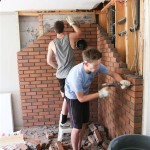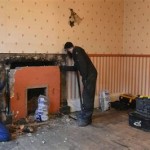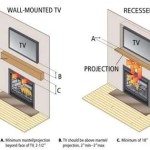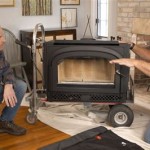Fireplace Chimney Damper Caps: Protection and Efficiency
A fireplace provides warmth and ambiance to a home, but its chimney requires proper maintenance and protection to function safely and efficiently. One crucial component of a chimney system often overlooked is the damper cap. While a chimney damper is designed to seal the flue when the fireplace is not in use, a damper cap offers additional protection from the elements and unwanted intruders. This article explores the importance of fireplace chimney damper caps, their various types, benefits, and installation considerations.
Understanding the Function of a Chimney Damper Cap
A chimney damper cap is a protective covering installed at the top of the chimney flue. Its primary function is to prevent rain, snow, leaves, debris, and animals from entering the chimney. Without a properly installed and functioning cap, these elements can cause significant damage to the chimney structure, restrict airflow, and even pose safety hazards.
Rainwater, for example, can saturate the chimney masonry, leading to spalling (the breaking off of small pieces of brick or stone) and deterioration. Moisture can also damage the firebox and other components of the fireplace system. Leaves and debris can accumulate inside the chimney, creating a fire hazard and potentially blocking the flue, leading to dangerous backdrafts of smoke and carbon monoxide into the home. Furthermore, animals such as birds, squirrels, and raccoons can nest in unprotected chimneys, causing obstructions and creating unsanitary conditions.
The chimney damper cap acts as a barrier against these threats, extending the lifespan of the chimney and ensuring its safe and efficient operation. It is a relatively inexpensive investment that can save homeowners considerable money on costly repairs in the long run.
Types of Chimney Damper Caps
Chimney damper caps come in various designs and materials to suit different chimney sizes, shapes, and aesthetic preferences. The most common types include:
*Multi-Flue Caps:
These caps are designed to cover multiple flues in a single chimney structure. They are typically larger and more robust than single-flue caps. They are suitable for chimneys that serve multiple fireplaces or appliances. *Single-Flue Caps:
As the name suggests, these caps are designed to protect a single flue. They are available in a variety of shapes and sizes to fit different flue dimensions. *Top-Mount Dampers:
These caps incorporate a built-in damper mechanism. They offer a tighter seal than traditional throat dampers, which are located inside the firebox. Top-mount dampers can help reduce heat loss up the chimney when the fireplace is not in use. *Decorative Caps:
These caps prioritize visual appeal and can feature intricate designs or custom finishes. While they still provide protection, their primary purpose is to enhance the aesthetic of the chimney. *Round Chimney Caps:
Designed for round flues, these caps provide a snug fit and prevent elements from entering. They are commonly fabricated of metal.The material of the chimney damper cap is also an important consideration. Common materials include:
*Galvanized Steel:
This is a cost-effective option that offers good protection against the elements. However, it can rust over time, especially in coastal areas. *Stainless Steel:
This is a more durable option that is resistant to rust and corrosion. Stainless steel caps are a popular choice for their longevity and aesthetic appeal. *Copper:
Copper caps are the most expensive option, but they offer exceptional durability and a distinctive look. Copper develops a patina over time, adding character to the chimney.When selecting a chimney damper cap, it is important to consider the size and shape of the flue, the climate, and the desired aesthetic. Consulting with a qualified chimney professional can help homeowners choose the most appropriate cap for their specific needs.
Benefits of Installing a Fireplace Chimney Damper Cap
The advantages of installing a chimney damper cap extend beyond simple protection from the elements. These benefits directly contribute to home safety, energy efficiency, and cost savings.
*Protection from Water Damage:
Perhaps the most significant benefit is the prevention of water damage. Rain and snow can cause serious problems within the chimney structure. Water infiltration can lead to cracked or spalling bricks, mortar deterioration, and even structural instability over time. Damper caps shield the flue from direct exposure to moisture, significantly reducing the risk of water-related damage. *Prevention of Chimney Blockage:
Debris such as leaves, twigs, and animal nests can accumulate inside the chimney flue, causing a blockage. A blocked chimney can lead to dangerous backdrafts of smoke and carbon monoxide into the home, posing a serious health hazard. A damper cap prevents these materials from entering the chimney, ensuring proper airflow and reducing the risk of carbon monoxide poisoning. *Prevention of Animal Intrusion:
Small mammals, birds, and insects often seek shelter inside chimneys. These unwelcome guests can create unsanitary conditions, build nests that obstruct the flue, and even damage the chimney structure. A chimney cap acts as a barrier, preventing animals from entering the chimney and creating a nuisance. *Improved Energy Efficiency:
Many chimney caps, particularly top-mount dampers, provide a tighter seal than traditional throat dampers. This helps to reduce heat loss up the chimney when the fireplace is not in use, improving energy efficiency and lowering heating bills. By preventing drafts and air leakage, a damper cap can contribute to a more comfortable and energy-efficient home. *Extended Chimney Lifespan:
By protecting the chimney from water damage, debris accumulation, and animal intrusion, a damper cap helps to extend the lifespan of the chimney. This reduces the need for costly repairs and replacements, saving homeowners money in the long run. A small investment in a chimney damper cap can provide significant long-term benefits.Installation Considerations
While some homeowners may be tempted to install a chimney damper cap themselves, it is generally recommended to hire a qualified chimney professional. Proper installation is crucial to ensure that the cap functions correctly and provides adequate protection. Incorrect installation can lead to leaks, instability, and even damage to the chimney. Furthermore, working on a roof can be dangerous and requires specialized equipment and safety precautions.
A chimney professional will be able to assess the condition of the chimney, determine the appropriate size and type of cap, and install it securely and safely. They will also be able to identify any underlying issues with the chimney structure and recommend necessary repairs. The steps involved in installing a chimney damper cap typically include:
*Inspection:
The chimney professional will inspect the chimney flue to ensure that it is free of obstructions and in good condition. *Measurement:
The flue opening will be measured to determine the correct size of the damper cap. *Preparation:
The top of the chimney will be cleaned and prepared to ensure a secure fit for the cap. *Installation:
The damper cap will be installed according to the manufacturer's instructions, using appropriate fasteners and sealants. *Verification:
The installation will be verified to ensure that the cap is properly secured and provides adequate protection.Regular maintenance is also important to ensure that the chimney damper cap continues to function properly. Homeowners should inspect the cap periodically for signs of damage, such as rust, cracks, or loose fasteners. Debris should be removed from the cap to ensure proper airflow. Consulting with a chimney professional for annual inspections and maintenance can help to identify and address any potential issues before they become major problems.
Local building codes and regulations may also dictate specific requirements for chimney damper caps. It is important to check with local authorities to ensure that the installation complies with all applicable codes. Factors like spark arrestor mesh size and chimney height above the roofline can be subject to regulation. Ensuring compliance not only avoids potential fines but also guarantees the safety and effectiveness of the chimney system.

Top Sealing Damper Chimney Advantages

What Is A Chimney Damper Full Service

Chimney Cap Installation Repair Vt Nh Savers

Fireplace Flue Dampers Ensure Optimal On

Chimney Damper Install Repair Top Mount Dampers

Chimney Damper Cap Stainless Steel

Cap Dampers Damper Locks San Diego Ca Weststar Chimney

Fireplace Dampers Chimney Flues

Fireplace Chimney Dampers Gallery Full Service

Chimney Caps Damper Repair Services Buffalo Rochester Ny
Related Posts








